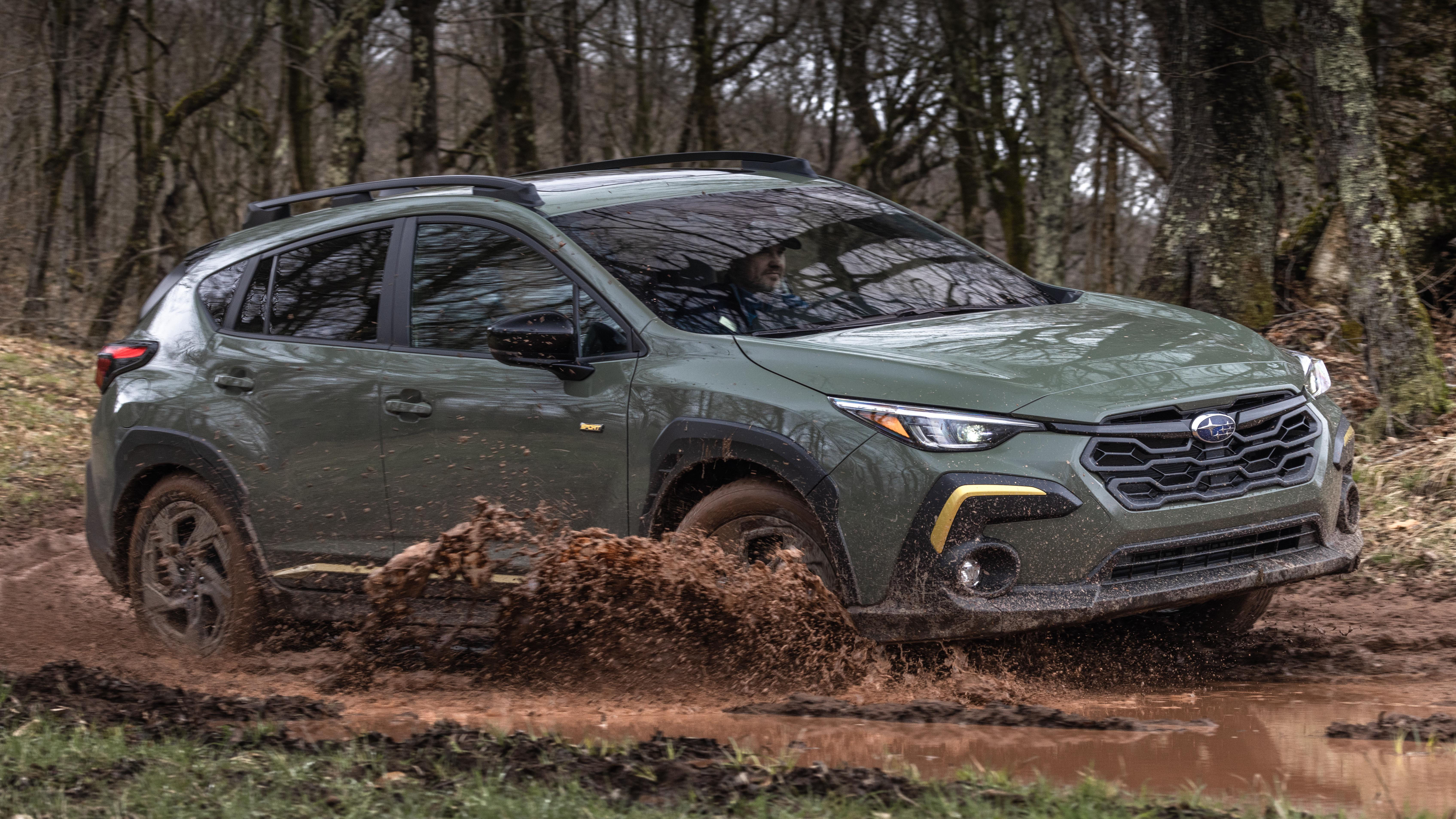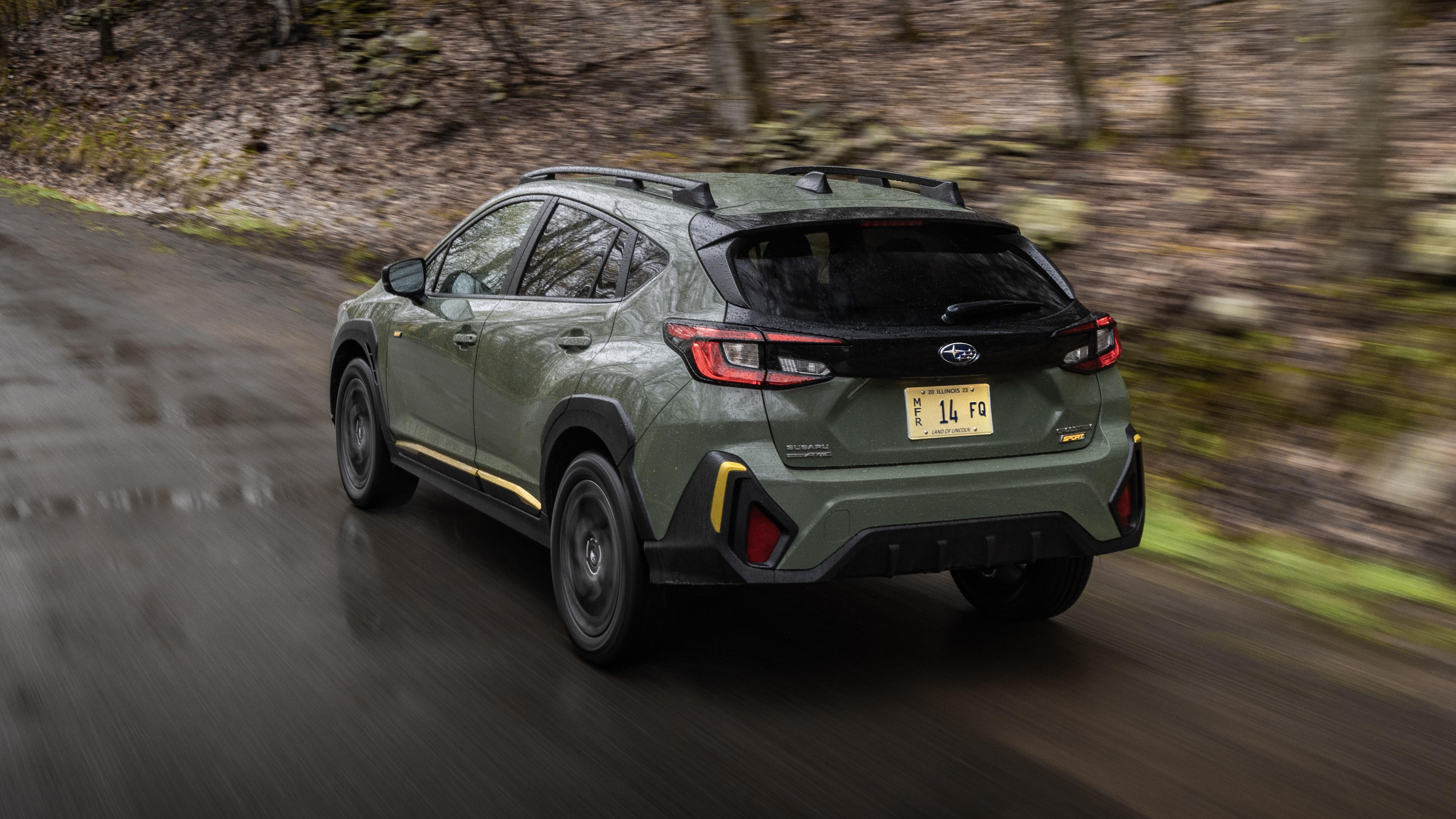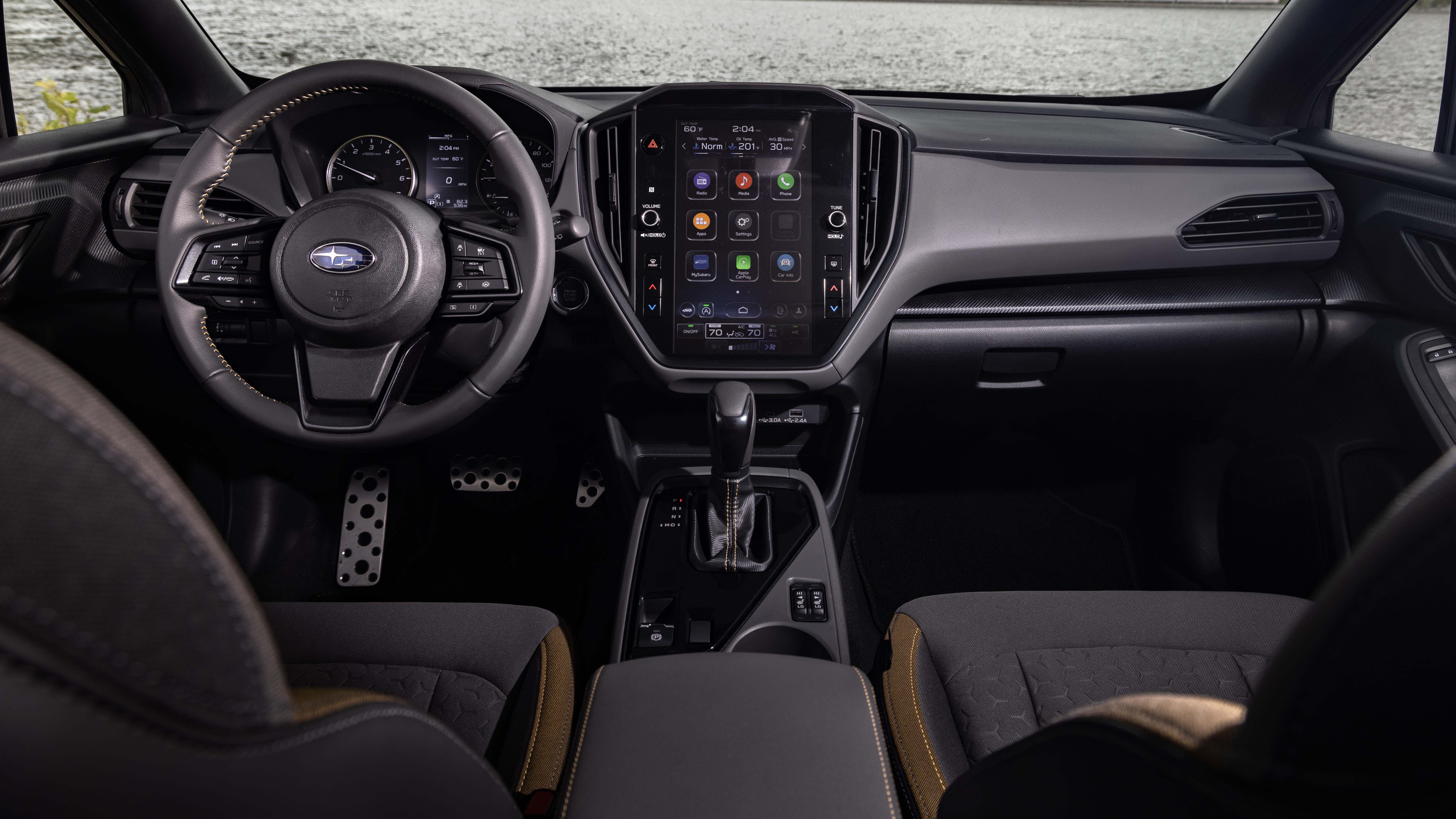
Subaru Crosstrek review
Driving
What is it like to drive?
Despite being slow, the Crosstrek is nevertheless surefooted. It’s not floaty or bouncy, but rather well controlled and comfy. A steering rack borrowed from the WRX means the front end turns in quickly and there’s a good amount of feedback through the wheel.
Honestly, aside from the dearth of power, the Crosstrek’s a charming little thing. You sit up high and there’s great visibility out the expansive windscreen. It’s quieter than most other small SUVs, to boot.
But those engines…
Look, nobody’s buying a Crosstrek because it’s quick or sporty. Given the choice between the two engines, you’re obviously better off with the 2.5-liter flat-four, as its 182hp and 178lb ft of torque are simply better suited for the 3,412-pound Crosstrek – even if it does take more than 8 seconds to hit 60 mph.
The 2.0-liter motor has 152hp and 145lb ft of torque, and you know, underpowered as it might be, this engine is at least pretty refined in its operation. There’s no glaring noise, vibration, or harshness, and the dull-as-dishwater CVT is more refined than you might expect.
What about fuel economy?
With the base engine, you're looking at 27 mpg city, 34 mpg highway, and 29 mpg combined, which is above average for small SUVs. Still, if you can afford to make the jump to the 2.5-liter engine, you really ought to, and with ratings of 26 mpg city, 33 mpg highway, and 29 mpg combined, it's not like you'll be paying too much extra for it at the pump.
Can the Crosstrek tow?
It can, technically, but if that’s a priority, you probably want to look elsewhere. Crosstreks are only rated to pull 1,500 pounds, which isn’t a whole lot, but perfectly fine if you just have a jet-ski or tiny camper.
The upcoming Crosstrek Wilderness, on the other hand, has a much beefier tow rating thanks to the addition of a transmission oil cooler. This version of the Crosstrek can pull 3,500 pounds, so it’ll be much more useful for trailering.
Featured







